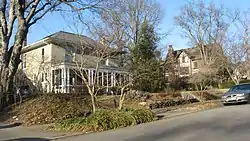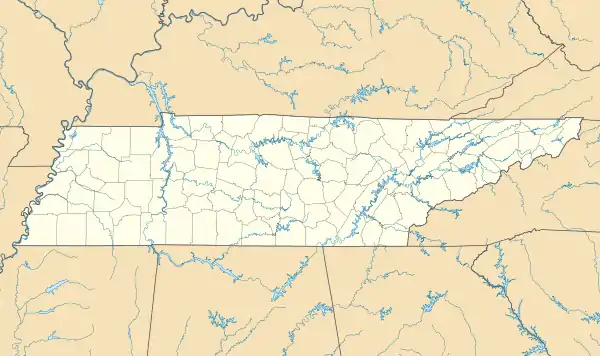Richland–West End Historic District
The Richland–West End Historic District is a historic district on the Western side of Nashville, Tennessee. It comprises approximately a 12-block area consisting mostly of Bungalow/craftsman architecture and about 70 Foursquare-style houses.[2]
Richland–West End Historic District | |
 Central Avenue in 2014 | |
  | |
| Location | Roughly bounded by RR tracks, Murphy Rd., Park Circle, Wilson and Richland Aves., Nashville, Tennessee |
|---|---|
| Coordinates | 36.1360°N 86.8289°W |
| Area | 135 acres (55 ha) |
| Architectural style | Bungalow/craftsman, Foursquare |
| NRHP reference No. | 79002425[1] |
| Added to NRHP | April 16, 1979 |
History
In the Antebellum Era, the district was a plantation owned by John Brown Craighead, the son of Presbyterian minister Thomas B. Craighead. John Brown Craighead's wife, Jane Erwin Dickinson, was the widow of a man killed in an 1806 duel with future U.S. president Andrew Jackson.[2] The plantation remained in the Craighead family until the end of the American Civil War.[2] By 1905, the Richland Realty Company developed the area, by laying out streets and building bungalows.[2]
The district has been listed on the National Register of Historic Places since April 16, 1979.[1]
The original Craighead House has award-winning gardens and architecture.
References
- "National Register Information System". National Register of Historic Places. National Park Service. July 9, 2010.
- David H. Paine and Ann V. Reynolds (February 1979). "National Register of Historic Places Inventory/Nomination: Richland–West End Historic District". National Park Service. Retrieved February 13, 2016. with more than 200 photos from 1979